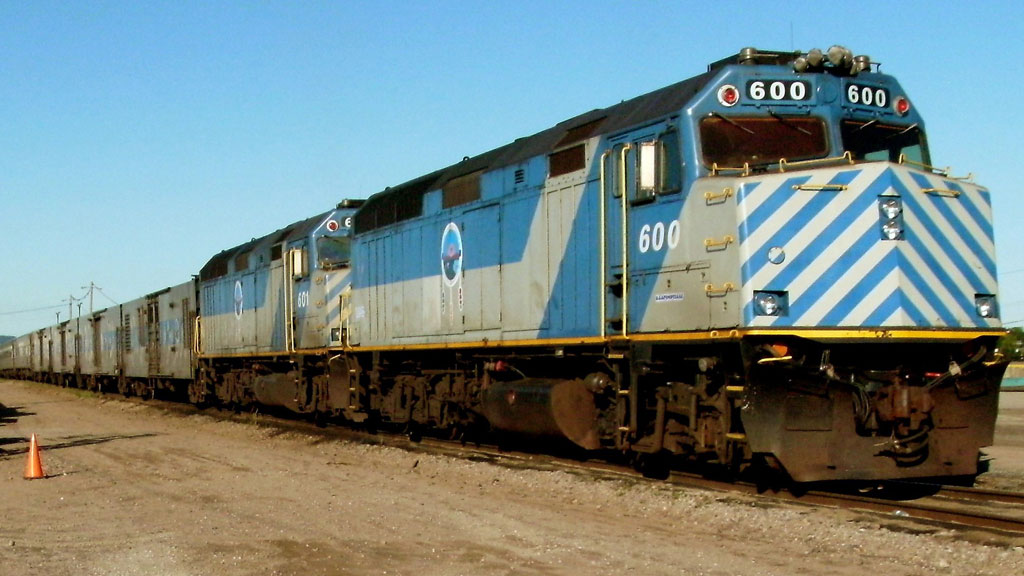One of Canada’s most remote rail lines will be undergoing significant modernization over the next decade with major social and economic benefits expected for the three northeastern Quebec and western Labrador First Nations it serves.
Tshiuetin Rail is the first Indigenous-owned and operated railway in Canada. Purchased by local Indigenous investors in 2004, it transports iron ore from Schefferville in Quebec to southern markets and provides a social and supply lifeline for Indigenous communities between Schefferville and Emeril Junction in Labrador.
The owners are the Innu of Uashat mak Mani-Utenam and Matimekush-Lac John as well as the Naskapi of Kawawachikamach.
The project, to be supported with a $50-million loan from the Canada Infrastructure Bank (CIB), consists of track improvements, construction of a new worker lodging camp and upgrading of an existing one, a new train station and a new passenger train with upgraded technology to enable LTE connectivity.
The 217-kilometre track is the only land transport link that connects the three First Nations and was in severe need of recapitalization, with decades-old cars and some tracks so unsafe that in some places service tracks were called into use as the main track fell into disrepair.
Hillary Thatcher, the CIB’s senior director for Indigenous and northern infrastructure, explained the project fits into two of the bank’s mandates — to address infrastructure gaps in Indigenous communities, and boost the trade and transport sector.
“This rail line was in need of some significant investments and the infrastructure bank, our mandate is structured to be a gap filler,” said Thatcher.
“Because we wanted to help to accelerate the infrastructure build, we were able to take on different portions of the risk.”
Indigenous communities, particularly in more remote and rural communities, often lack equitable access, Thatcher said.
“That’s being able to have a means to access goods and services, and those goods and services being able to flow to the communities in a more affordable way,” she explained, defining that concept.
Transport Canada has a regulatory framework that requires passengers be safe during transport.
Tshiuetin Rail, being a small company, Thatcher said, was well run but it was proving difficult to finance the many components of proposed upgrades within a short period of time.
The CIB’s funding will condense the works.
In addition to the northern track, Tshiuetin also operates a 574-kilometre passenger train service along the northeastern Quebec and western Labrador rail route.
Stephen Scott, a senior manager of investments at the CIB, outlined the seven to 10 years of improvements to be made.
The early years are focused on improving the asset condition of the track and the rail structure to ensure safety and in later years the project will upgrade the rolling stock with new locomotives that are more fuel efficient and will switch to electrification when idling.
Last summer 7,000 feet of rail was changed with 10,000 new ties and 600 elimination joints added. Track level surfacing and levelling was also done.
This year there will be more track added and the mini camp at Emeril Junction will be planned and erected over three years.
That’s meant to house workers so that they can be easily mobilized during the construction period as well as perform maintenance, and it provides a stop in the event of any safety emergencies.
A later part of the project is the construction of a modern terminal at Sept-Iles on the St. Lawrence River. Tshiuetin Rail previously constructed a new station at Schefferville in 2017 so there is some expertise in station design and building.
“They want this new train station to be tied into the national transportation network, so closer to the airport,” said Scott.
The new locomotive will be modern diesel, much more efficient than the stock from the 1970s and ‘80s, Scott said.
The goal for freight upgrades is to be able to transport about two million tonnes of iron ore per year, and that is from just the current mine operating, said Scott.
The area is known to be rich in iron so more miners might come online in future.
Other economic opportunities include enhancing prospects for tourism, Thatcher said, and local communities will be able to upgrade their infrastructure including businesses as shipping is enhanced.
And importantly, community ties will be strengthened, Thatcher said, with hunters and anglers able to access the land more reliably and to share their harvests with family and elders in nearby communities.
The project is also being supported by the Quebec government’s Plan Nord and Transport Canada.
The leadership of Tshiuetin Rail was not available for comment.
Follow the author on Twitter @DonWall_DCN.











Recent Comments